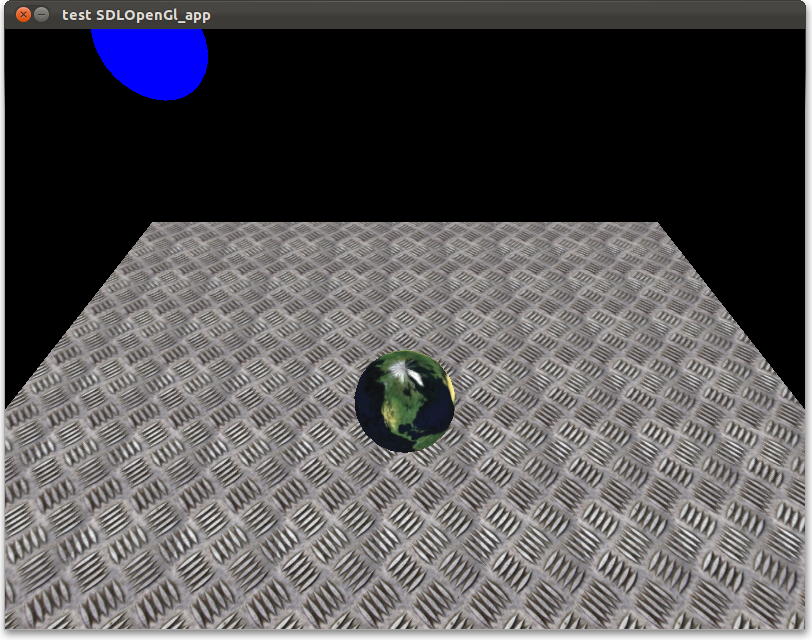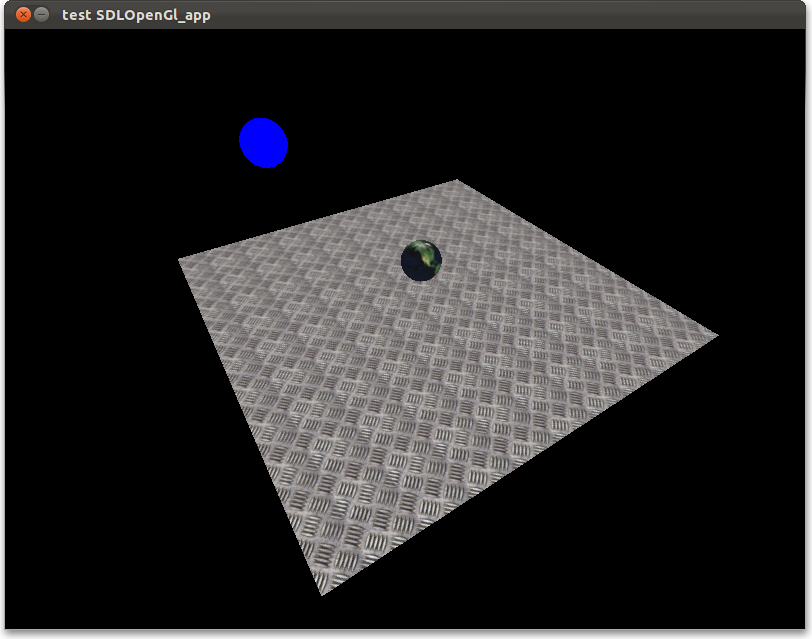| Précédent Plaquer des textures sur des surfaces carrée ou triangulaire | Parent Plaquer des textures | Sommaire | Suivant Optimiser l'affichage : les glLists |
En fait c'est très simple de faire se répéter une texture, il suffit de passer des valeurs plus grandes que 1 dans les fonctions glTexCoord2*.
Avec ces valeurs la texture se répétera 10 fois en longueur et en largeur du carré affiché :
1 2 3 4 5 6 7 |
glBindTexture(GL_TEXTURE_2D, idDeTexture); glBegin(GL_QUADS); glTexCoord2d(10,10); glVertex3d(10.0, 10.0, 0.0); glTexCoord2d(10,0); glVertex3d(10.0, -10.0, 0.0); glTexCoord2d(0,0); glVertex3d(-10.0, -10.0, 0.0); glTexCoord2d(0,10); glVertex3d(-10.0, 10.0, 0.0); glEnd(); |
Voici a quoi ressemble la fonction draw dans ce cas :
1 2 3 4 5 6 7 8 9 10 11 12 13 14 15 16 17 18 19 20 21 22 23 24 25 26 27 28 |
void AppTest::draw(){ glEnable(GL_TEXTURE_2D); glBindTexture(GL_TEXTURE_2D, p_textureSol); glBegin(GL_QUADS); glColor3ub(255, 255, 255); glTexCoord2d(10,10); glVertex3d(10.0, 10.0, 0.0); glTexCoord2d(10,0); glVertex3d(10.0, -10.0, 0.0); glTexCoord2d(0,0); glVertex3d(-10.0, -10.0, 0.0); glTexCoord2d(0,10);glVertex3d(-10.0, 10.0, 0.0); glEnd(); glTranslated(0.0, 0.0, 2.0); glBindTexture(GL_TEXTURE_2D, p_textureTerre); gluQuadricDrawStyle(p_params, GLU_FILL); gluQuadricTexture(p_params, GL_TRUE); glColor3ub(255, 255, 255); gluSphere(p_params, 1.0, 20, 20); glDisable(GL_TEXTURE_2D); glTranslated(5.0, 5.0, 5.0); glColor3ub(0, 0, 255); gluSphere(p_params, 1.0, 20, 20); } |
Et voilà le résultat :

Regardons ce que ça donne sous un autre angle :

C'est la classe.
Mais le problème c'est que tout ceci est très lent. Mais on va y remédier.
| Précédent Plaquer des textures sur des surfaces carrée ou triangulaire | Parent Plaquer des textures | Sommaire | Suivant Optimiser l'affichage : les glLists |